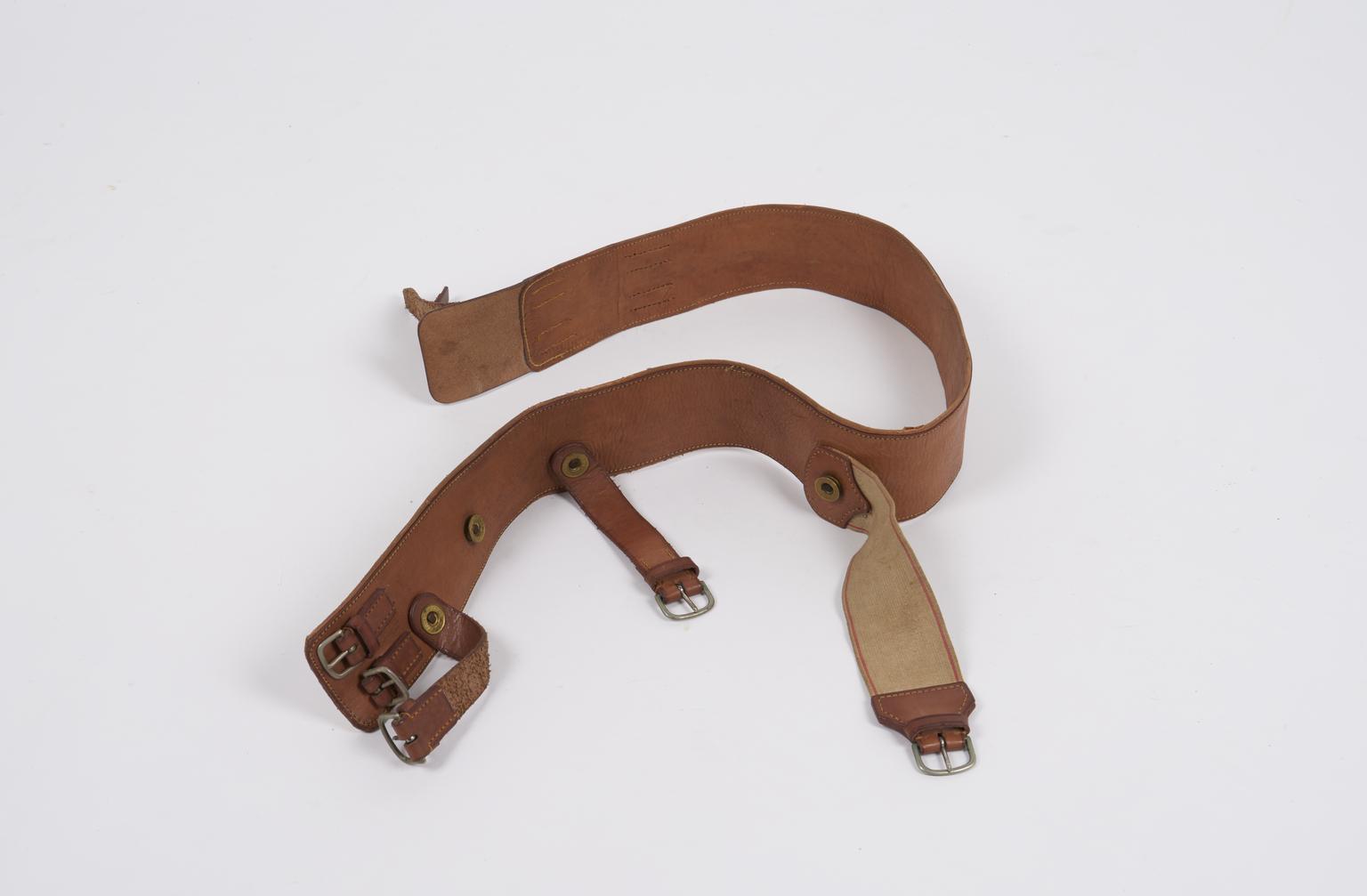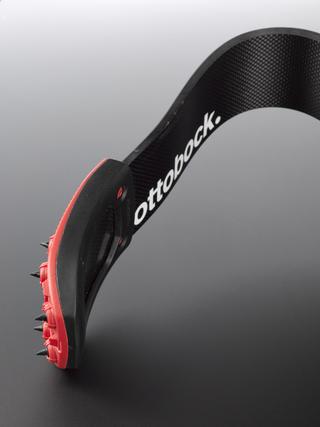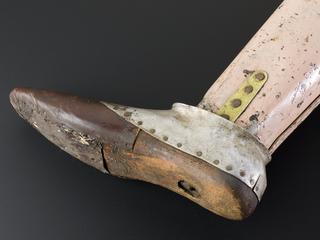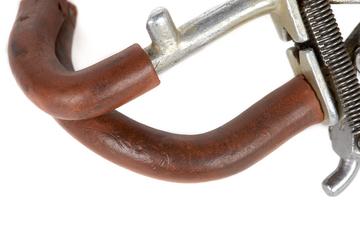
Leather corset for artificial left leg, London, England, 1861-1920
Leather corset for artificial left leg for amputation at knee, by W.R. Grossmith, 1861-1920
More
Someone who had their left leg amputated on the knee joint used this leather corset with an artificial leg. The leather corset secures the prosthesis to the thigh. It is perforated so the wearer will not get too hot. Inside the calf is a v-shaped metal bar attached to a spring. This prevents the wearer falling forward yet allows them to walk with comfort. The ankle and knee joints are lockable. The toes are made of flexible leather.
William Robert Grossmith’s company made this limb. He also wrote ‘Amputations and Prosthetic Limbs’ in 1857.
- Materials:
- leather and brass (copper, zinc alloy)
- Object Number:
- A603149/1
- type:
- strap
- Image ©
- The Board of Trustees of the Science Museum











